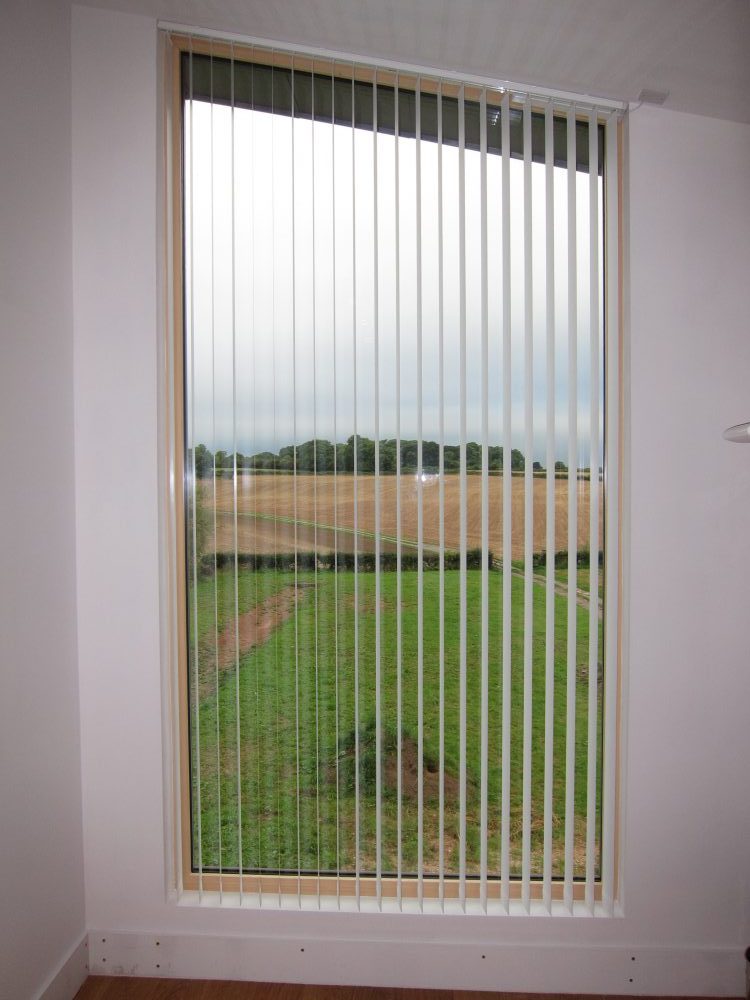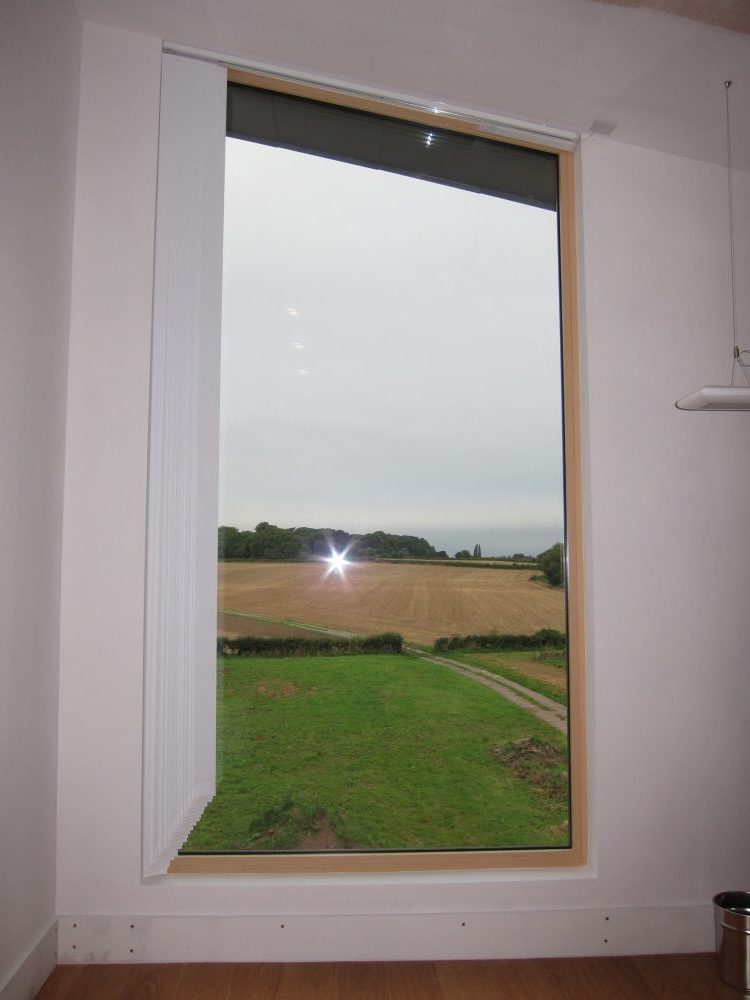With work on the Outbuildings progressing, it will only be a few months until those provide a large Workshop space which will replace the current use of Bedroom 5 on the Second Floor of the House, which has been temporarily acting as a workshop and ‘shed’. It’s therefore a good time to start preparing for that being used as a bedroom; up until recently little had been done since it was first built and the walls and ceiling were still bare plaster.
Natural lighting for Bedroom 5 comes from two fixed skylight windows deeply recessed into the ceiling which slopes at 11 degrees to the horizontal. They’re tilted towards the North but with them being so nearly horizontal they do receive direct sunlight in the summer months, which can tend to make this room a bit too warm. These windows therefore want ‘blackout’ blinds which exclude enough light for sleeping in this bedroom and which can also be used to block out the summer sun.
Many of the available skylight blinds are designed to be fitted to the wooden frame of opening roof windows from VELUX and similar window manufacturers, where the blind needs to move with the window when that opens and closes. Those are a good solution where the window opens and where they are relatively accessible – such as in a loft conversion. However, they’re not suitable for this installation.
As with all the other ‘windows’ in the House, these skylight locations were wired back to KNX-managed relay controls for 230V electric blind motors, using three-core-and-earth cabling. All but one of the other windows have electric roller blinds (the exception has an electric vertical blind) which rely on gravity and a metal hem bar to operate. With these windows being so close to horizontal, roller blinds need ‘help’ to close – and to stop them sagging.
Previous research to find suitable blinds had failed to identify a good solution. The closest match is blind systems used for genuinely-horizontal ‘roof lights’ or ‘roof lanterns’. Some roof light blinds use ‘honeycomb’ fabric and low-voltage motors and radio controls, which would complicate the automation compared with a simple 230V motor and relay control. Other systems designed for (much) larger roof lanterns had minimum sizes which were slightly too large for these relatively modest skylight openings.
In the end I settled on the Helios RL Wire-guided rooflight system from Umbra Shading for which there is a good range of technical resources explaining how they work. In broad terms, these use spring-loaded wire spools to apply tension to the blind fabric and to pull it down as the motor unwinds. Local installer Butterley Barn Interiors supplied and installed Helios RL blinds with enclosed top and bottom boxes to conceal the roller tube and spring boxes.

There’s a bit of a gap at each side of the blind, where the guide wires are. For an even better blackout effect that could be covered with an angle-section trim strip


